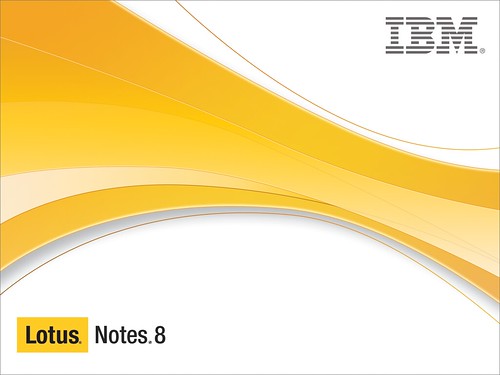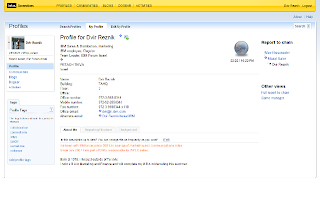 IBM and Themarker.com held the annual Innovation Event today, just outside of Tel Aviv, Israel. The main issue was innovation (obviously), and a respectable list of speakers came to this invitation only event to hear how (and most importantly) why innovation is crucial to businesses, regardless of size or industry.
IBM and Themarker.com held the annual Innovation Event today, just outside of Tel Aviv, Israel. The main issue was innovation (obviously), and a respectable list of speakers came to this invitation only event to hear how (and most importantly) why innovation is crucial to businesses, regardless of size or industry.
Meir Nissensohn, IBM Israel General Manager opened the event with a 2 min clip of his activities in the virtual world of Second Life. He then followed by saying that innovation is what makes a company survive, although there’s usually a natural tendency to resist the change. Meir gave the example of IBM itself, back in the 1990’s, when the company lost $6-8B a year – only when we felt it in the flesh, it started to matter. Until then we (as many other successful companies) behaved as if we were unbeatable. Everything is working fine – why fix if it’s not broken? You can read more on Meir keynote here.
For those who haven’t been in the business 15-20 years ago, IBM was facing some rough times. Losses were at $6-8B a year, massive cutoffs were considered and the business climate has changed. Shifted. There were even talks of splitting up IBM into 6-7 smaller companies.
Lou Gerstner, the 1st CEO who was brought outside of Big Blue, decided to focus future business on Business Services (among other things), not products, and some IBM executives didn’t see his logic. IBM Global Services brought $47B in 2006, out of $91B total revenue.
 After all the formalities were put a side, the floor was cleared for the last presentation, mine, on the “3D Internet – Applying Virtual Worlds to Business.” At first I (and my colleagues from IBM/TheMarker) were not sure how many people would stay to the presentation – it was at the end of the day, 5pm, was published only at the event itself (not on the program) – in short, it could go either way. To my surprise, and from the feedback we got – people who knew about the presentation, waited just for it. The presentation was short and brief, and I tried to convey the message of where we are now and where are we going, and why 3D internet is the logical next step. I followed with some some examples on various business applications for virtual worlds, such as Commerce (Circuit City and Sears stores), Education and Training, Events and Collaboration (Greater IBM) and others (CDC, University of California). IBM has been investing heavily in virtual worlds for over a year now, with various projects, covering many aspects of our business and society. I like to think that people left my presentation with a better understanding of virtual worlds and the opportunities for businesses. We must always remember that virtual worlds are only at their beginning, with many applications yet to be developed, and we as individuals must find the right balance between out virtual life and real life…
After all the formalities were put a side, the floor was cleared for the last presentation, mine, on the “3D Internet – Applying Virtual Worlds to Business.” At first I (and my colleagues from IBM/TheMarker) were not sure how many people would stay to the presentation – it was at the end of the day, 5pm, was published only at the event itself (not on the program) – in short, it could go either way. To my surprise, and from the feedback we got – people who knew about the presentation, waited just for it. The presentation was short and brief, and I tried to convey the message of where we are now and where are we going, and why 3D internet is the logical next step. I followed with some some examples on various business applications for virtual worlds, such as Commerce (Circuit City and Sears stores), Education and Training, Events and Collaboration (Greater IBM) and others (CDC, University of California). IBM has been investing heavily in virtual worlds for over a year now, with various projects, covering many aspects of our business and society. I like to think that people left my presentation with a better understanding of virtual worlds and the opportunities for businesses. We must always remember that virtual worlds are only at their beginning, with many applications yet to be developed, and we as individuals must find the right balance between out virtual life and real life…



